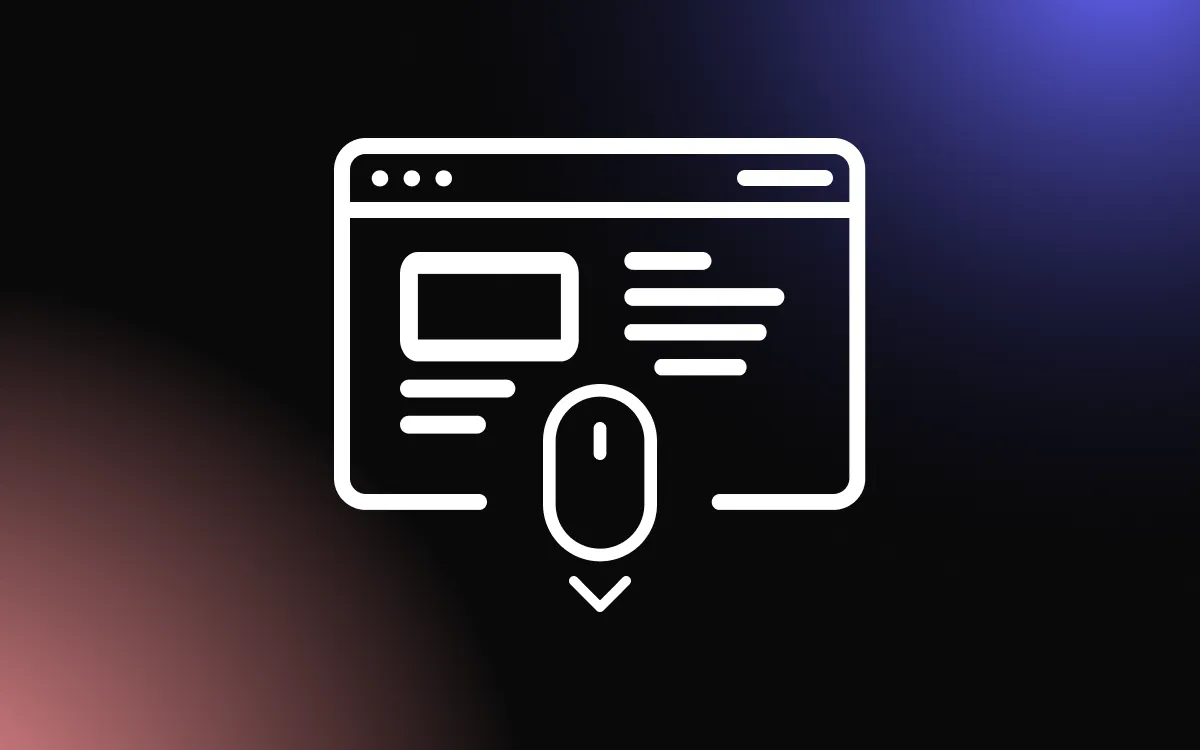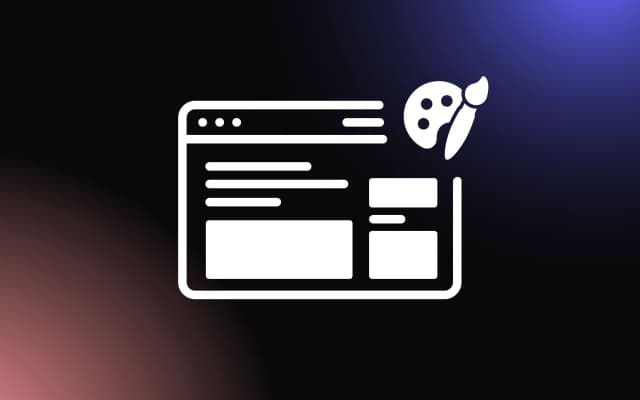
In the vast digital landscape, capturing the attention of your audience and guiding them towards a desired action is crucial. One of the most powerful tools in your arsenal to achieve this is the Call to Action (CTA).
A well-crafted CTA can be the difference between a user simply visiting your website and a user engaging with your content, signing up for your newsletter, or even making a purchase.
This article will delve into the art of creating effective CTAs for your website, covering everything from the basics and design principles to testing and continual optimization strategies.
Basics of Effective CTAs

Definition of a CTA
A Call to Action, commonly referred to as a CTA, is a directive to the audience designed to provoke an immediate response. It's typically expressed as a command or action phrase, such as 'Buy Now', 'Sign Up', or 'Learn More'.
CTAs are crucial in digital marketing as they guide your visitors towards your desired goal, be it making a purchase, subscribing to a newsletter, or downloading a resource. Essentially, a well-crafted CTA serves as a stepping stone that transitions a visitor from interest to action, playing a pivotal role in your website's conversion process.
Core Components of a Successful CTA
A successful Call to Action (CTA) is composed of several core components that work together to motivate the user to take a desired action.
Firstly, clear language is paramount. Your CTA should be straightforward and easy to understand, leaving no room for ambiguity about what will happen when the user clicks. It should succinctly convey the benefit the user will receive from taking the action.
Secondly, using action-oriented verbs is essential. These are words that prompt the user to do something, such as 'Download', 'Subscribe', 'Buy', or 'Start'. These verbs create a sense of urgency and encourage the user to act immediately.
Importance of CTA Placement
The placement of your Call to Action (CTA) can significantly impact its effectiveness. Strategic placement ensures your CTA is seen by your website visitors at the right time, increasing the likelihood of them taking the desired action.
One common technique is placing the CTA above the fold, meaning it's visible without the user having to scroll down. This ensures the CTA is one of the first things a visitor sees. However, if your website requires more context or explanation before prompting an action, placing the CTA further down the page might be more effective.
A/B testing can be invaluable in determining the best placement for your CTA. By creating two versions of your webpage with the CTA in different locations, you can compare which version drives more conversions. This data-driven approach can help you optimize your CTA placement for maximum effectiveness.
Designing CTAs That Capture Attention

The Role of Design in CTAs
Design plays a critical role in making your Call to Action (CTA) stand out and capture the attention of your website visitors. Two key elements to consider are color and typography.
Color psychology can greatly influence how users perceive your CTA. Different colors evoke different emotions and reactions. For instance, red often conveys urgency, while green typically signifies positivity and progress. Choosing a color that contrasts with the rest of your webpage can also make your CTA pop and draw the eye.
Typography, including font choice and size, is another important aspect. Your CTA text should be easy to read and large enough to be noticeable. The font style should align with your brand identity, but it must remain clear and legible.
Using Shapes and Whitespace Effectively
The shape of your Call to Action (CTA) button and the use of whitespace around it can significantly influence its visibility and click-through rate.
Popular shapes for CTA buttons include rectangles and rounded rectangles. These shapes are familiar and intuitive to users, making them more likely to engage. However, the impact of shape can depend on the overall design of your website and the preferences of your audience. It's worth experimenting with different shapes and monitoring the results to find what works best for your site.
Whitespace, or the empty space around your CTA, is equally important. It helps your CTA stand out from the rest of the content and reduces visual clutter, making it easier for users to focus on the action you want them to take. Effective use of whitespace can lead to a cleaner design and a more noticeable CTA.
Crafting Compelling CTA Text

Importance of Persuasive Language
The text you use in your Call to Action (CTA) can be the deciding factor in whether a visitor chooses to engage or not. Persuasive language is key in crafting compelling CTA text.
Power words are a crucial element of persuasive language. These are words that elicit strong emotional responses and can motivate your audience to take action. Examples include 'Free', 'New', 'Save', 'Instant', and 'Exclusive'. Incorporating these words into your CTA can make it more enticing and effective.
Creating a sense of urgency or scarcity is another powerful technique. Phrases like 'Limited Time Offer', 'Only a Few Left', or 'Offer Ends Soon' can create a fear of missing out (FOMO) and prompt users to act immediately rather than delaying their decision.
Remember, the goal is to make your audience feel like they're gaining something of value by clicking on your CTA. By using persuasive language, you can create a compelling proposition that's hard for your visitors to resist.
Keeping the Message Concise
When it comes to crafting the text for your Call to Action (CTA), brevity is key. However, it's a delicate balance between keeping your message short and ensuring it's informative enough to clearly convey what action you want the user to take and what they'll gain from it.
A concise CTA is easy to read and understand, making it more likely for users to take the desired action. Too much text can overwhelm users and dilute the main message. Remember, your CTA is not the place to provide detailed information or explanations. That's the job of the surrounding content.
For instance, 'Download Now for Free' is a concise yet informative CTA. It tells users exactly what to expect — a free download — and prompts immediate action with 'Now'. Similarly, 'Start Your Free Trial' is short and to the point, but it also communicates the value proposition clearly.
Optimizing CTAs for Different Platforms
CTAs for Mobile Devices
In today's digital world, optimizing your Call to Action (CTA) for mobile devices is not just beneficial, it's essential. With the majority of web browsing now happening on mobile devices, your CTAs need to be designed with mobile users in mind.
Mobile-friendly CTAs are not just about size and placement, although these are important factors. A CTA button on a mobile device should be large enough to tap easily, but not so large that it dominates the screen or disrupts the user experience. Placement should also consider the way users hold and interact with their devices. A CTA placed where it's easy for a thumb to reach can improve engagement.
Moreover, the text of your CTA needs to be concise and clear, even on a smaller screen. Avoid using too many words, and make sure the font size is legible on mobile devices.
Lastly, consider the loading speed. Mobile users are often on the go, and they won't wait around for slow-loading pages. Make sure your CTA loads quickly to maintain the user's attention and encourage them to take action.
CTAs for Desktop Websites
While mobile optimization is crucial, it's equally important to master the art of crafting effective Call to Action (CTA) buttons for desktop websites. Desktop users interact with websites differently than mobile users, and these differences should be reflected in your CTA design and placement.
One of the main differences between desktop and mobile CTAs is the amount of screen real estate available. On desktop, you have more space to work with, allowing for larger and more detailed CTAs. However, this doesn't mean you should overload your CTA with text or make it excessively large. The key is to maintain balance and ensure your CTA stands out without overwhelming the rest of your content.
Effective desktop CTA strategies often involve placing the CTA button above the fold, where it's immediately visible without scrolling. However, the best placement can vary depending on the layout and content of your page, so it's worth experimenting and testing different placements.
Another strategy is to use directional cues, like arrows or images of people looking towards the CTA, to subtly guide the user's attention towards the action you want them to take.
Testing and Improving Your CTAs

Importance of A/B Testing
A/B testing is a powerful tool in the optimization of your Call to Action (CTA) buttons. It involves creating two versions of your CTA, each with a different element changed, such as the color, text, or placement. These versions (A and B) are then shown to different segments of your audience to see which performs better.
Conducting an A/B test on your CTAs is relatively straightforward with the right tools. Many website platforms and marketing software include built-in A/B testing features. The key is to only test one element at a time, so you can clearly attribute any differences in performance to the change you made.
Interpreting the results of your A/B test involves comparing the performance metrics of each version. This could be the click-through rate, conversion rate, or any other metric that indicates success for your specific goal. The version that performs better according to your chosen metric is the one you should implement on your website.
A/B testing is an ongoing process. The digital landscape and user behavior are constantly changing, so it's important to continue testing and refining your CTAs to ensure they remain effective.
Continual Optimization Strategies
Mastering the art of effective CTAs is not a one-time task, but rather an ongoing process of testing, learning, and refining. One of the key strategies for continual optimization is iterating based on performance metrics. Monitor your CTA performance regularly, looking at metrics like click-through rates, conversion rates, and bounce rates. If a CTA isn't performing as expected, don't be afraid to make changes and test again.
Another strategy is to stay updated with the latest trends in CTA design and copy. The digital landscape is constantly evolving, and what worked a year ago might not be as effective today. Regularly reading industry blogs, attending webinars, and participating in online marketing communities can help you stay on top of the latest best practices and trends.
Remember, the goal of continual optimization is to ensure your CTAs remain effective and continue to drive the desired actions from your users. By regularly testing and staying updated with trends, you can ensure your CTAs continue to perform at their best.
Conclusion
Mastering the art of effective CTAs is a dynamic process that requires understanding, creativity, and a commitment to continual learning and optimization. By focusing on clear language, strategic placement, compelling design, and persuasive text, you can create CTAs that truly resonate with your audience and drive them towards desired actions.
Remember, the most effective CTAs are those that are tested, refined, and updated based on performance metrics and evolving trends. So, keep experimenting, keep learning, and keep optimizing to ensure your CTAs remain a powerful tool in your digital marketing strategy.



